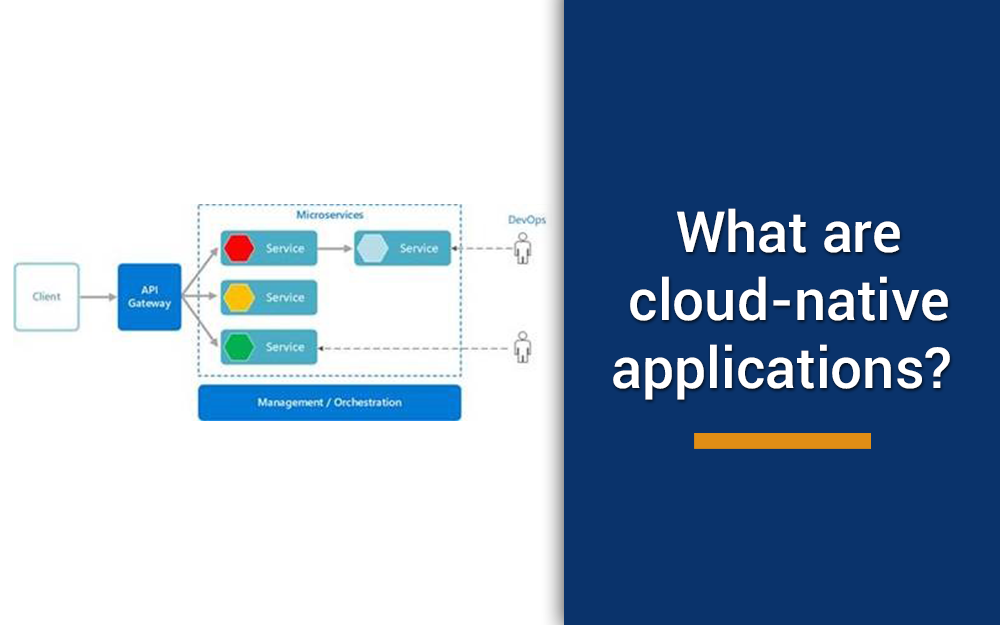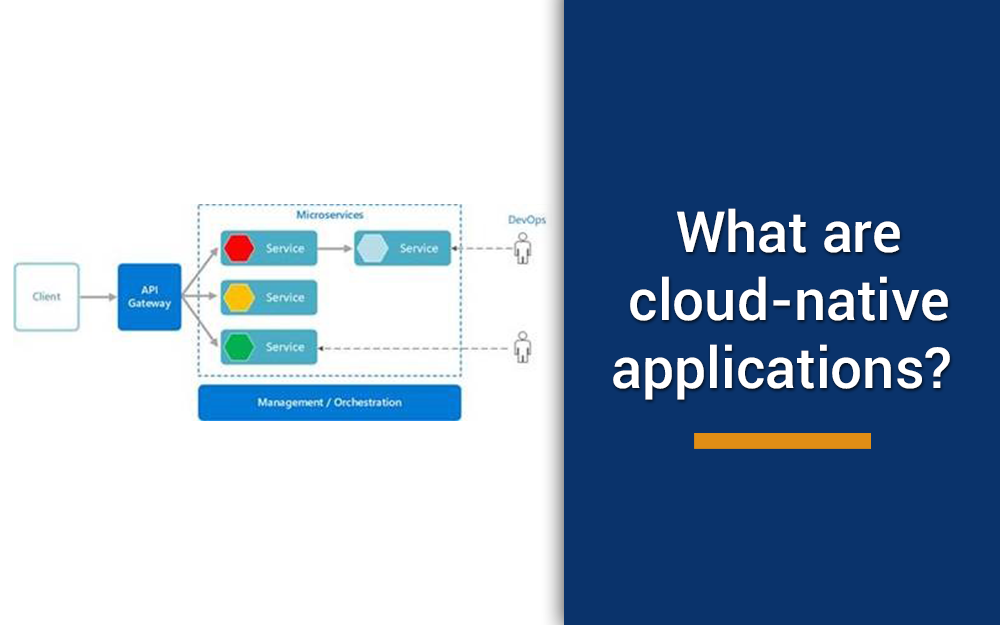If you have ever had an experience in cloud computing or application development, you probably have heard the word “cloud-native” tossed around.
But what exactly does cloud-native mean? How it differs from the concept of the traditional approach? And, why it is so important?
There will be a huge demand for microservices-based architectures in the future.
IDC researchers predict, by 2022, it is estimated that 90% of all new apps will feature microservices architectures that improve the ability to design, debug, update, and leverage third-party code; 35% of all production apps will be cloud-native.
So, now that we know the future belongs to cloud-native applications, let us first look at the definition of cloud-native.
What are cloud-native applications?
According to the InfoWorld blog by Andy Patrizio, “cloud-native is an approach to building and running applications that exploit the advantages of the cloud computing delivery model. “Cloud-native” is about how applications are created and deployed, not where.”
In a simplified way, cloud-native is a term that contains different characteristics of the cloud – they start their life in the cloud and remain there.
It is also important to understand what is not cloud-native. Moving something in the cloud is not cloud-native, it should be of the cloud – multi-tenancy, flexibility, integration, and administration in its design.
One common example of something becoming cloud-native can be a travel website. Each section of a travel website can work as microservice – flights, hotels, buses, cars, etc.
Now, each microservice may share features independent of the other microservices. While the travel website may remain the same, each microservice can be updated individually without affecting the function of other services.
Cloud-native applications refer to the apps that are based on microservices. These apps are dependent on specific architectures, technologies, and platforms.
What are Microservices?
It is important to understand the concept of Microservices when you are considering cloud-native applications for your business.
Microservices are a new approach to developing applications divided into many small services that can be deployed independently.
Each microservice implements a unique set of actions and can be updated as well as deployed independent of other microservices in the application which enables you to make frequent changes to any of them without impacting the other ones.
This microservice can communicate via a mechanism, such as a container to accomplish a business goal.
What are the benefits of being Cloud-Native?
#1 Flexibility: Flexibility in the cloud lets you to deploy, repeat and redeploy resources fast and easily, whenever and as long as necessary. This flexibility makes it simple to experiment and implement in the cloud.
#2 Automatic: Cloud-native applications are built on the idea of architecture as a code and have a highly automated process. A definite proportion of automation is needed to produce output faster. It reduces our effort in testing and delivering the product.
#3 Efficiency: Cloud-native solutions allow you to access and monitor every process with ease. They use “infrastructure as a code” model to automate several deployment and operational tasks.
Simultaneously with this, they make it easy for the operations team to deploy and manage the whole process in a standardized way.
#4 Testability: The cloud-native approach uses CI/CD (Continuous Integration/Continuous Delivery) to establish an automated way to test applications and deploy them as soon as the code is built.
With this, the development teams can commit code changes more quickly and reliably that leads to better cooperation and software quality. The outcome of this approach provides stronger confidence than usual.
#5 Disposability: The cloud-native infrastructure supports the disposable process that starts up soon and shuts down gracefully providing maximum robustness and quick recovery from unexpected crashes.
Cloud-native vs traditional approach

#1 Traditional- OS dependent, Cloud Native- OS independent/ OS abstraction: The traditional infrastructure allows to build close dependencies between the app and the OS.
This dependency makes the application migration process complex and risky. The cloud-native infrastructure lets the developers abstract away from infrastructure dependency which allows the teams to focus on their software entirely.
ALSO READ: Top 5 cloud solutions that you should consider to digitally transform your organization
#2 Traditional- Manual, Cloud Native- Automated: Traditional development process requires heavy in-house administration as they are manually operated, which can be time-consuming and expensive for your business.
Cloud-native infrastructure is automated in nature that consistently applies the same set of rules in the process across any size of deployment.
#3 Traditional- Unpredictable, Cloud Native- Predictable: Traditional infrastructure is based on a long-term development process. It takes a longer time to build and releases are done as one big package.
On the other hand, a cloud-native infrastructure is designed to maximize the resiliency through predictable behaviours to enable new business functions.
#4 Traditional- Over-sized capacity, Cloud Native- Right-sized capacity: The traditional infrastructures are over-sized that lack the capability to scale beyond, delaying the deployment of an application.
The cloud-native infrastructure allocates the resources based on the ongoing requirement of the application. This approach optimizes app lifecycle management.
It’s time to make your move

With the advent of cloud-native, the code complexities have been simplified, making it easy for developers to develop a better application. Unlike traditional infrastructure, cloud-native is flexible, secure, automated and provides easy monitoring while building directly into the application.
You will want to digitize your business with this approach to define and execute your vision. Cloud-native would be the right process that would provide you with the exact services you require today.
Don’t just think cloud, think ‘cloud-native’.
Featured Image Source: Microsoft









